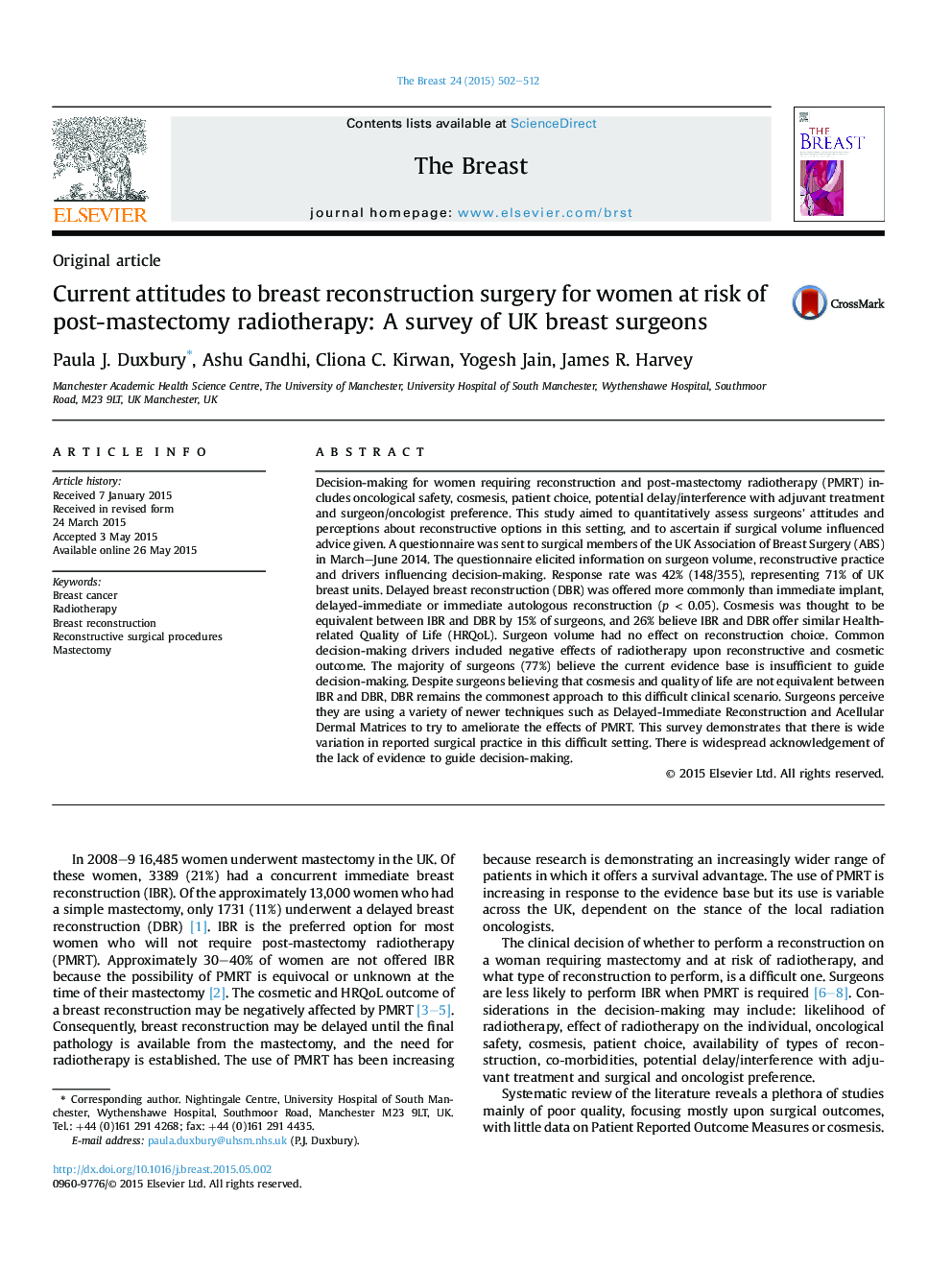| Article ID | Journal | Published Year | Pages | File Type |
|---|---|---|---|---|
| 6169632 | The Breast | 2015 | 11 Pages |
•Delaying breast reconstruction is the most commonly used approach to reconstructive surgery when radiotherapy may be required.•Use of Acellular Dermal Matrices to ameliorate the effects of radiotherapy is widespread.•There is an acknowledgement of the lack of evidence to guide decision-making.
Decision-making for women requiring reconstruction and post-mastectomy radiotherapy (PMRT) includes oncological safety, cosmesis, patient choice, potential delay/interference with adjuvant treatment and surgeon/oncologist preference. This study aimed to quantitatively assess surgeons' attitudes and perceptions about reconstructive options in this setting, and to ascertain if surgical volume influenced advice given. A questionnaire was sent to surgical members of the UK Association of Breast Surgery (ABS) in March–June 2014. The questionnaire elicited information on surgeon volume, reconstructive practice and drivers influencing decision-making. Response rate was 42% (148/355), representing 71% of UK breast units. Delayed breast reconstruction (DBR) was offered more commonly than immediate implant, delayed-immediate or immediate autologous reconstruction (p < 0.05). Cosmesis was thought to be equivalent between IBR and DBR by 15% of surgeons, and 26% believe IBR and DBR offer similar Health-related Quality of Life (HRQoL). Surgeon volume had no effect on reconstruction choice. Common decision-making drivers included negative effects of radiotherapy upon reconstructive and cosmetic outcome. The majority of surgeons (77%) believe the current evidence base is insufficient to guide decision-making. Despite surgeons believing that cosmesis and quality of life are not equivalent between IBR and DBR, DBR remains the commonest approach to this difficult clinical scenario. Surgeons perceive they are using a variety of newer techniques such as Delayed-Immediate Reconstruction and Acellular Dermal Matrices to try to ameliorate the effects of PMRT. This survey demonstrates that there is wide variation in reported surgical practice in this difficult setting. There is widespread acknowledgement of the lack of evidence to guide decision-making.
Graphical abstractFigure optionsDownload full-size imageDownload high-quality image (149 K)Download as PowerPoint slide
